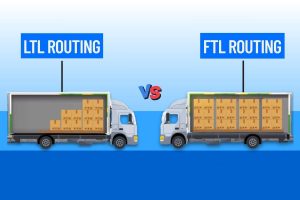Ever wondered what’s happening in India’s villages beyond farming? There’s a whole wave of start‑ups popping up in rural areas — offering tech, e-commerce, banking, education and more. These aren’t typical city-based ventures. Instead, they’re being built for and by villagers to solve real local problems.
Here’s the story of how rural India is embracing entrepreneurship and what it really means for communities across the country.
A Surge in Agritech Start‑Ups
Agritech is a rural innovation success. By early 2025, there were some 1,555 agritech start‑ups still active, just ahead of the 1,554 reported in February 2024. This shows that the sector is stable, despite not being in quite such good health as it once was.
One of the biggest is DeHaat, which is based in the state of Bihar. They provide seeds, market links, loans and advice to 700,000 small farmers in seven states through 4,000 centres. So it’s not just farming tech: it’s a whole support system in the villages.
Bridging Gaps in Remote Healthcare and Schools
Rural entrepreneurs are turning their attention to schools and health centres. Consider the Sampark Foundation, which deployed 25,000 Sampark TV units and an app to teach English and math to rural kids. Picture children being educated through television and voice apps in areas with few teachers.
Another good model are Common Service Centres (CSCs) — local shops from which village entrepreneurs offer government services, banking, and even telemedicine and education — all digitally.
E-Commerce Meets The Village
Rural India’s consumers now want things online. And they’re getting it.
By March 2025, a lot of small companies were building businesses around rural commerce: logistics, marketplaces, B2B platforms, and even direct-to-consumer brands. There are some 48 rural e‑commerce start‑ups, such as ElasticRun, Vilcart and Frontier Markets.
Another promising initiative is the Open Network for Digital Commerce (ONDC), which will allow Farmer Producer Organisations to sell their produce online via the village.
Digital Tools Helping Small Businesses
Villages’ micro and small enterprises are taking on smartphones and QR wallets. According to a recent survey, more than 73% of rural MSMEs witnessed growth after they adopted digital technology, especially UPI payments.
These are the nifty little tools that help small retailers, small service providers, and artists to manage orders, stocks and finances with ease. One QR code is enough to transform even a roadside stall into a modern business.
Farming Smarter With Data
Some start‑ups are using space tech and satellite data to tackle farming problems. For instance, Cropin lets farmers plan sowing and irrigation better, helping one farmer in Andhra Pradesh increase net profit from ₹5,000–10,000 per acre to about ₹20,000 per acre.
It’s a powerful example of how advanced tech can step into the hands of ordinary farmers.
Government Support And Village Focus
The Indian government has created schemes to boost rural start‑ups. In April 2023, 2,207 DPIIT‑recognised agritech firms were working across 360 districts, creating over 18,000 jobs.
Schemes like One District One Product (ODOP) and rural tie-ups with ONDC encourage hundreds of Farmer Producer Organisations to sell online
Local agriculture universities are also working with new founders. In Karnataka, UAS Dharwad highlighted that smart agri-start‑ups and Farmer Producer Organisations build resilience in farming
Early Wins, But Plenty Left To Do
Rural start‑ups are getting attention and cash, but not as much as their city peers. Experts at the 2025 Startup Mahakumbh warned that agri-tech in villages is still behind.
Challenges include weaker roads, patchy internet, and limited access to funding and mentors. But the mood is changing: even Tier 2 and 3 towns are becoming innovation hubs as VC interest grows.
Start‑Ups That Care About The Planet
A green edge is visible too. Climate-tech start‑ups that focus on clean energy, rainwater use, and natural pest control has raised over US$3.6 billion between 2014–2024, with over 800 firms now active.
One great example from this year? Zor, a battery-sharing scheme for farmers without reliable electricity. Trials in Odisha and Jharkhand are already boosting productivity and cutting costs.
The Numbers Show Progress
While city-based start-ups raised US$30.4 billion in 2024 — a slight dip from $32.5 billion in 2023— rural players are rising steadily. By mid‑2025, urban VC dipped 11 % but rural-focused ventures kept their momentum. The rural wave is steady, not fleeting.
Real Impact In Villages
All this effort is delivering real change. Companies like e‑Choupal have equipped 6,100 kiosks in 35,000 villages, directly helping around 4 million farmers with better prices and farming advice. Phone banking, insurance, telemedicine—they’re all now part of everyday rural life via CSCs
Why This Matters
Rural start‑ups aren’t just business projects. They’re boosting incomes, cutting rural-to-city migration, and pulling villages into the digital age. When a small firm in a village can sell produce, offer loans, teach kids or treat patients remotely, that’s a leap forward.
It also spreads innovation to towns beyond the big five cities. Lucknow, Coimbatore and Mangalore — not traditional tech hubs — are shining with fresh local talent and affordable infrastructure.
Looking Ahead: What’s Next?
India’s rural start‑up story is just beginning. With more government support, better internet and smarter funding, the possibilities are vast.
Expect to see more local innovators solving local problems. From solar micro-grids to herbal medicine kits, from village fintech to rural skills platforms — the next few years may bring big surprises from small towns.
Final Word
Rural India isn’t waiting for someone to “fix” it. It’s finding its own path through start‑ups built by locals. These ventures reach into farming, health, education, green tech, banking and more—all for the people who live there.
The rural wave won’t replace city start‑ups. Rather, it adds strength to the whole ecosystem. And that’s good news for India’s future.











